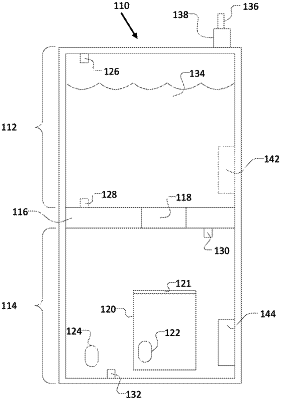| CPC C01B 3/065 (2013.01) [B01J 7/00 (2013.01); B64B 1/58 (2013.01); B64B 1/62 (2013.01); B64B 1/64 (2013.01); B01J 27/128 (2013.01); B01J 2523/821 (2013.01); B01J 2523/822 (2013.01); B01J 2523/845 (2013.01); Y02E 60/36 (2013.01)] | 20 Claims |

|
1. A system for generating hydrogen gas comprising:
a vessel that includes:
a first chamber for holding liquid water;
a second chamber, wherein the first chamber is separated from the second chamber by a barrier;
a trigger valve integrated into the barrier, the trigger valve opening to transition the liquid water from the first chamber to the second chamber and thereby initiate generating the hydrogen gas;
a reactant container disposed within the second chamber for containing a solid reactant, wherein the hydrogen gas is generated from a chemical reaction between the liquid water and the solid reactant when the liquid water contacts the solid reactant inside the reactant container;
a thermal regulator surrounding the reactant container within the second chamber for controlling a pre-reaction temperature of the liquid water passing though the thermal regulator before the liquid water reaches the solid reactant in the reactant container and reacts in the chemical reaction;
a pressure relief valve disposed on the vessel and configured to allow the generated hydrogen gas to exit the vessel at a predetermined pressure; and
a temperature sensor disposed in the second chamber for sensing a sensed temperature inside the second chamber; and
a controller adapted to control a flow of a coolant through the thermal regulator for limiting the sensed temperature to a set temperature so that the generated hydrogen gas exiting the vessel at the predetermined pressure attains a substantially constant flow rate during the chemical reaction.
|